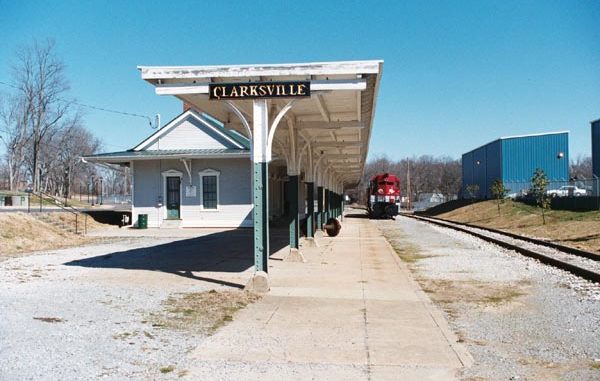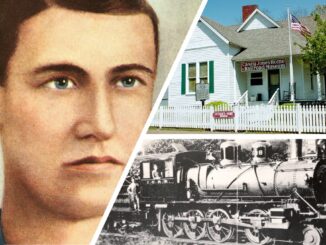
Standing on 10th Street in downtown Clarksville, it’s hard to imagine that this was once a bustling transportation hub around the turn of the 20th century. Passenger trains no longer pass through the city and freights trains are seldom seen. But, the tracks are there and they are still in use. The old depot, known by locals as the L&N Station, still stands, but it no longer serves weary travelers stepping off a train from Louisville, or passenger ready to being a trip.
The city of Clarksville grew up around the Cumberland River as much as it did around the railroad. Tracks were first laid through Clarksville and Montgomery County on the eve of the Civil War, but fell into disarray during the conflict. They were revitalized after the war, but again fell into disarray in the latter half of the 20th century. Time and time again the tracks were rebuilt.
As they did elsewhere in the nation, railroads fell into disfavor in the 1950s. Passenger service declined, as automobiles became the favored mode of transportation by millions of Americans.
By the turn of the 21st century, railroads weren’t considered an important part of the city’s industry. A short line, running over dilapidated tracks that looked as if they should be abandoned, still served the region’s needs. An editorial in the Sept. 24, 2002, edition of The Leaf-Chronicle spoke to the lack of rail service. The lack of rail service options was a reason the city was considered to be on the “B List” of major corporations looking to build factories.
When Clarksville is evaluated on its potential to attract new industry, one deficiency that cannot and should not be overlooked is the community’s lack of rail service options.
Today, Clarksville is served by a short-line railroad, R.J. Corman, which is based in Nicholasville, Ky. In turn, Corman is served by only one class 1 railroad – CSX, which comes into Corman’s Guthrie, Ky., location.
This simply is not enough rail access.
City-county Industrial Development Board Executive Director Mike Evans said the community needs to find a way to bring in a second class 1 railroad provider to the industrial park or get trackage rights for CSX to allow another class 1 rail provider to use their site to come into the industrial park.
Today’s industries want flexibility. They can’t gamble with their company’s ability to get out a shipment and get it out on time – with their shipping schedule hostage to a virtual monopoly.
In evaluating railroad history in Clarksville – and the region, which includes Robertson, Stewart and Houston Counties in Tennessee and Christian and Todd counties in Kentucky – the natural starting point is the Memphis, Clarksville & Louisville Railroad. The road was chartered in the 1850s and ran from Paris, Tenn., to Bowling Green, Ky., which meant of the three namesakes in the line’s name, Clarksville was the only town it actually served.
But almost equally important is the Louisville and Nashville Railroad. At first, the road didn’t run through Clarksville. The Memphis, Clarksville & Louisville Railroad joined the Louisville and Nashville Railroad in Guthrie, Ky. From there, passengers could travel almost anywhere in the United States. The Louisville and Nashville Railroad took control of the Memphis, Clarksville & Louisville Railroad in the 1870s.
Today, R.J. Corman calls its short line to Cumberland City the Memphis Line. Ironically, the line doesn’t even reach Memphis. The name, obviously harkens back to a time when tracks reached Memphis and the Mississippi River, which afforded travelers another means of transportation.
The Memphis, Clarksville & Louisville Railroad is often overlooked, overshadowed by a larger road – The Louisville and Nashville Railroad. But its importance is great. It is the first line that served Clarksville and other communities such as Cumberland City and Palmyra, which today can be considered “off the beaten trail.” During the mid 19th century, they must have been considered to be a quite a trek.
This work looks to examine railroads in the Clarksville area. Newspaper reports provide much of the historical context necessary to write the history. The Leaf-Chronicle, Clarksville’s newspaper, is the oldest newspaper in Tennessee, tracing its origins to 1808. Two papers – The Tobacco Leaf and The Clarksville Chronicle – merged in 1890 to form The Clarksville Leaf-Chronicle, later named The Leaf-Chronicle in the latter half of the 1970s.




